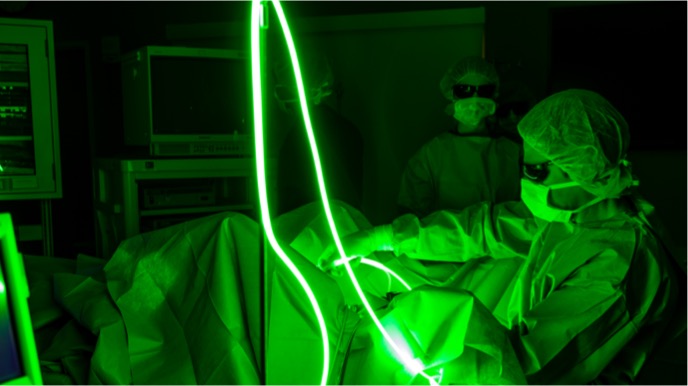Understanding your treatment
GreenLightTM Laser Therapy uses laser technology to treat benign prostatic hyperplasia (BPH), also called an enlarged prostate. Over one million men worldwide have been treated with GreenLight Laser Therapy for BPH.1

How it works
GreenLight Laser Therapy treats BPH by vaporizing obstructive prostate tissue. During your procedure, your doctor uses innovative laser technology to remove your overgrown prostate tissue and to help restore natural urine flow.
Potential Benefits of GreenLight Laser Therapy*
Men typically experience symptom relief as soon as 2 weeks after treatment, with improvements continuing for up to 3 months.2 When compared to traditional surgery, GreenLight Laser Therapy can provide several advantages including:²⁻⁷
- Shorter hospital stay
- Shorter catheterization time
- Less bleeding
- Faster recovery
- Recommended for high-risk patients (ex. High blood pressure, blood thinner medications)8
Knowing the side effects*
GreenLight Laser Therapy restores natural urine flow, often within 24 hours of the procedure.² As with all surgical treatments, there are risks and side effects, and you should speak with your doctor about them before moving forward with any treatment option. Patients using GreenLight Laser Therapy in some cases have reported irritative symptoms (such as urgency or frequency urinating), bleeding, retrograde ejaculation (semen enters the bladder instead of releasing from the penis during ejaculation) and urinary tract infection.
Recovering from your procedure*
Your doctor will discuss further instructions during your follow-up visit. In general, here are a few things you can expect from your recovery:
- Having a catheter for about a day after the procedure2
- Having an outpatient procedure, meaning an overnight hospital stay isn't require
- Resuming normal activities within a couple of days2
Regular follow-up visits*
It’s important to maintain follow-up visits, even if you’re feeling well. During these visits, your doctor may will monitor your progress, evaluate your medications, check the status of your overall health and determine the outcome of your treatment.